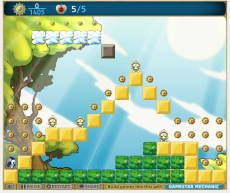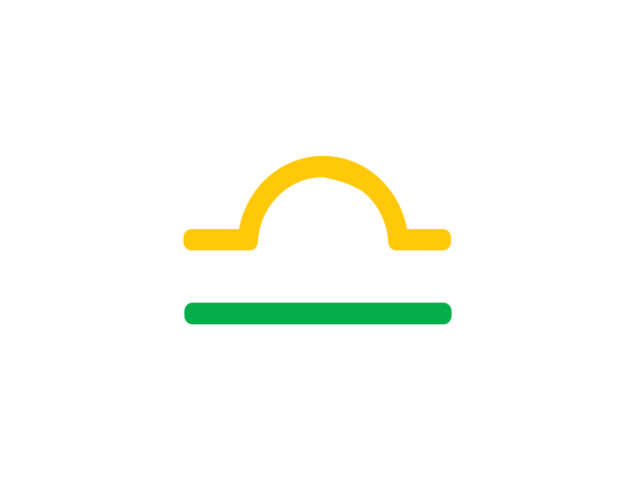 As a graduate student studying games for learning, and a general geek extraordinaire, I’ve been given the unique opportunity this summer to teach a new online program for kids who want to learn how to design video games. E-Line Media, a Cooney Center partner in the National STEM Video Game Challenge, and the creator of the game-building platform Gamestar Mechanic, has designed an engaging curriculum that teaches kids not only how to make their own games, but also what it is that game designers actually do. And it’s a lot more than just sitting around playing video games all day!!
As a graduate student studying games for learning, and a general geek extraordinaire, I’ve been given the unique opportunity this summer to teach a new online program for kids who want to learn how to design video games. E-Line Media, a Cooney Center partner in the National STEM Video Game Challenge, and the creator of the game-building platform Gamestar Mechanic, has designed an engaging curriculum that teaches kids not only how to make their own games, but also what it is that game designers actually do. And it’s a lot more than just sitting around playing video games all day!!
As a part of my experience teaching, I’ll be blogging in a series of posts informed by insights from parents and designers involved in this new program. The Gamestar Mechanic Online Learning Program was launched this summer as a special experience for kids to learn all about design from start to finish. With Florida Virtual School as a partner in the project, the program is full of instructional materials and learning resources in addition to existing quests and challenges within the Gamestar Mechanic website. The quests, available for free online, guide kids through the game building platform by having them create games to address specific design goals, within a larger narrative and kid friendly world.
Just like professional game designers, students in the Online Learning Program go through the process of brainstorming, creating paper and digital prototypes to plan their game designs, playtesting, and reiterating, reiterating, reiterating their games to make them the best they can be! And most importantly, students in the program have tons of opportunities to share their games with peers for review and feedback, and thoughtfully critique one another’s games with design suggestions. The culminating event of the summer for each student will be the opportunity to share one final showcase game to a professional game designer with years of experience in the field, and get personalized video feedback.
The current climate of digital media in schools and the home, including the increasing use of games for learning and the subject of game design as a learning activity in the classroom, makes this a very exciting time for aspiring young designers. It’s very exciting to see programs like this being created to provide support and encouragement that kids need to go into a variety of fields in their future careers. And I have to say, as a self-titled geek extraordinaire, I’m blown away by how cool these young people really are. One of my students has even been writing his own blog about his experience in the program, which readers can check out on the Science Buddies website.
Through some really enthusiastic introductory phone calls and Skype sessions with students and their parents over the past couple of weeks, I’ve learned that some of the kids drawn to the Online Learning Program this summer have some completely awesome goals. Many want to be game designers when they grow up. Some want to be computer programmers and eventually learn how to code their own games. One student is going into his junior year of high school, but wants to teach middle school students how to design their own games. Some even want to be in different fields of design like architecture, but feel that learning about game design will help them become better at other things. And then of course, there are the kids that love games so much that they just really want to look at them more closely and see how games work when they take them apart and put them back together again. A couple of my students are so excited about their personal goals with gaming and design that they actually saved up their own money from chores and allowance to pay for the course this summer.
All of my students for the summer have now started the program, and runs through the end of August. They range in age from 4th to 10th graders and live all over the country, but are connected to one another through the Gamestar Mechanic website. For some of them, this is the first time they’ve ever tried to make a game of their own. For others, they have been making games for a couple of years and can’t wait to make even more. Some have never taken a class over the Internet, or used chat features to communicate with a teacher, while others are already pros. Some have never had to manage their time before and engage in self-guided learning, while other students have an additional teacher to guide them through the course in person, as a part of a summer program. There are also a handful of extremely dedicated teachers who are going through the course on their own as a student to determine how to incorporate the curriculum into their own classrooms in the fall.
While student abilities and aspirations may vary, the outcomes should be incredibly exciting across the board. I’m very excited to share my perspective over the next couple of weeks, and even more excited that I get to spend a nice chunk of my summer helping the next generation of designers (teachers, architects, programmers, and so on) have a great time learning more about games, and reaching their goals. More to come soon!





